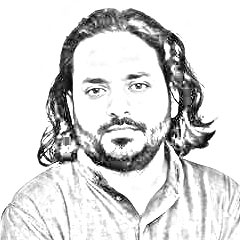
The 163rd birth anniversary of Sir Ganga Ram took place recently — he was born on April 13, 1851 in Mangtanwalla, south of Lahore. Though, with time, many have forgotten him and probably do not know much about him, but in both India and Pakistan there exist his memories, his great vision and efforts still intact in stone. He continues to be remembered and appreciated through his countless works in the service of humanity.
Sir Ganga Ram was born and brought up in British India. With his vision of progress through scientific and technical developments, he gained admission in Thomason College of Civil Engineering. This college, now called the Indian Institute of Technology, Roorkee, is regarded as one of most reputed institutions in India. He was the first Indian to graduate from this college.
This can be said to be only his first achievement in a long list of achievements. Sir Ganga Ram is regarded as the father of modern Lahore. He has been credited for designing and building the General Post Office, Lahore Museum, Ravi Road House for the Disabled, Model Town and a number of educational institutions. These include Aitchison College, Mayo School of Arts (now the NCA), Lady Mclagan Girls High School, the chemistry department of the Government College University, the Albert Victor wing of Mayo Hospital, Sir Ganga Ram High School (now Lahore College for Women), the Hailey College of Commerce and the Lady Maynard Industrial School. Among his other innovative contributions is Sir Ganga Ram’s ‘lift irrigation system’, which converted about 50,000 acres of barren land into green land.
Besides being a civil engineer, he was also a great philanthropist. A very important contribution by Sir Ganga Ram is the Sir Ganga Ram Trust. Originally established as a dispensary, it was later developed as a hospital and still exists in Lahore. Though he died in 1927, after partition, Sir Ganga Ram Hospital was established in New Delhi in the year 1954. It is one of the most reputed and trusted hospitals in India. Another equally important fact is that it seems that the trust invoked by the name of Sir Ganga Ram and the unparalleled quality of the hospital attracts many patients from Pakistan. In this regard, I also find it important to mention the vision that he not only owned but which also got communicated to the people who manage the hospital now.
Last December, we, Aaghaz-e-Dosti (an Indo-Pak friendship initiative), received an opportunity to invite the chairperson of Sir Ganga Ram Hospital (India), Dr D S Rana as one of our prestigious speakers for a discussion on Indo-Pak peace and friendship. Dr Rana, during his speech, shared the great vision and work of the great philanthropist. He also said that Sir Ganga Ram still lives in the hearts of millions of people in India and Pakistan through these two hospitals in Lahore and Delhi, where they treat all patients equally regardless of any socio-economic identities. He also talked about his experience of visiting Pakistan and the warm welcome that he had received. He said that both the hospitals are in communication with each other. It is great to know how his vision is being shared by the people who manage the hospital today. His vision for the progress of humanity is being served today for not just a more progressive and just society but also to bridge the gap between India and Pakistan.
His works, standing as symbols of peace, also remind me of the famous story by Saadat Hasan Manto called ‘The Garland’. The story, which was set against partition-related riots, described how, in violence-hit Lahore, a mob turned to attack the statue of a Hindu philanthropist, Sir Ganga Ram. They first pelted the statue with stones, then smothered its face with coal tar and a man-made garland of old shoes was put around the neck of the statue. The police arrived and opened fire. Among the injured was the fellow with the garland of old shoes. As he fell, the mob shouted, “Take him to Ganga Ram Hospital.”
I feel that the memory of Sir Ganga Ram, his vision and his works, which are a part of our shared past can become a connector for a peaceful and more prosperous future. He would not have imagined the separate existence and creation of India and Pakistan because his work and his vision have indirectly tried to bridge the gap between the two countries.
The writer is a petroleum engineer, core team member of Aaghaz-e-Dosti and founder of Mission Bhartiyam. He may be followed on Twitter at #ravinitesh
